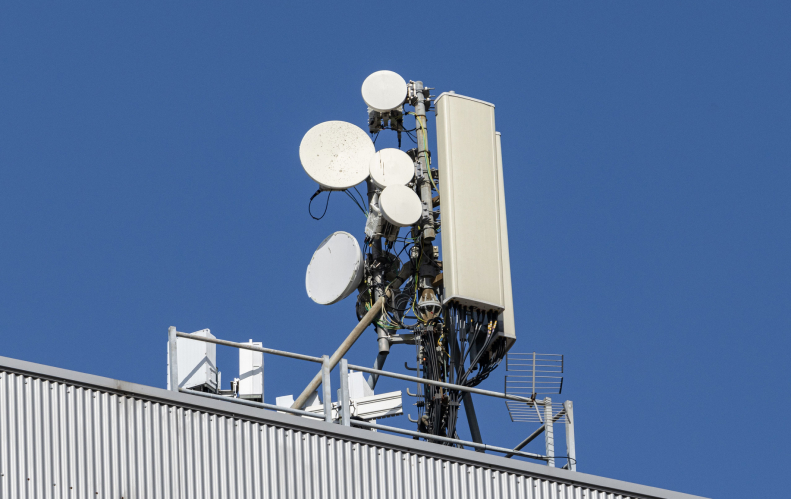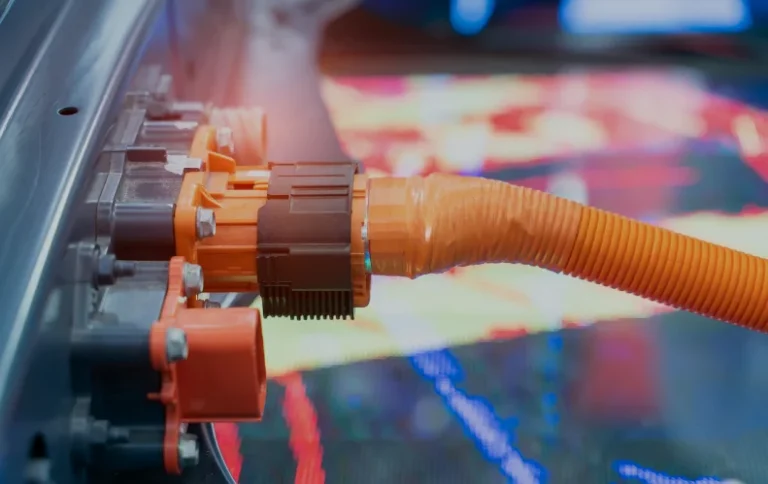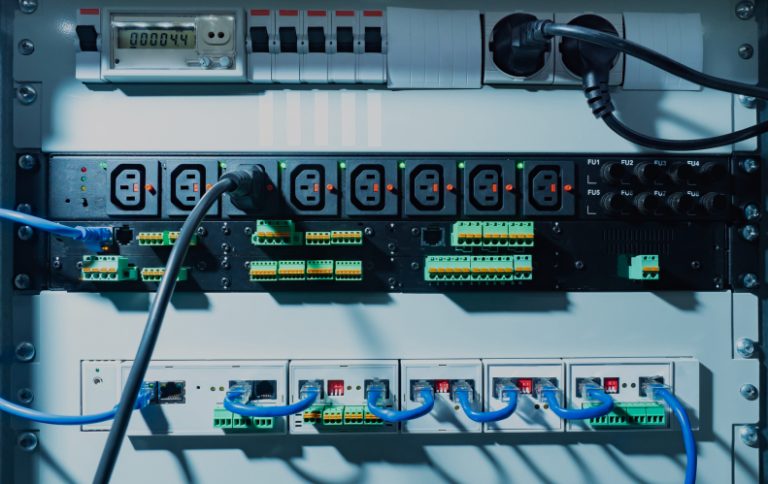The demand for high-speed, low-latency wireless communication is increasing as urban environments become more densely populated with mobile users, IoT devices, and smart infrastructure. With the rapid expansion of 5G networks, smart cities, and enterprise networks, optimizing RF signal distribution is more crucial than ever.
Panel antennas are at the forefront of modern network deployment, offering directional signal transmission that enhances coverage, efficiency, and reliability. When paired with beamforming technology, they can dynamically adjust signal direction to maximize network performance while reducing interference.
This article explores how panel antennas improve RF coverage, the role of beamforming strategies, and best practices for optimizing deployment in high-density urban areas.

Understanding Panel Antennas and Their Role in RF Networks
What Is a Panel Antenna?
A panel antenna is a directional RF antenna designed to transmit and receive signals in a focused beam rather than radiating in all directions like an omni antenna. This focused approach allows better control over RF coverage, making panel antennas ideal for urban areas, stadiums, airports, and enterprise networks.
How Panel Antennas Differ from Omni Antennas?
When designing an RF network, choosing between panel antennas and omni antennas is crucial for optimizing coverage, signal strength, and interference control. While panel antennas provide focused, high-gain directional coverage, omni antennas distribute signals evenly in all directions. Understanding their differences helps network engineers select the best antenna type for urban deployments, enterprise networks, and high-density environments.
| Feature | Panel Antenna | Omni Antenna |
| Coverage Pattern | Directional (Focused Beam) | 360° (All-Direction) |
| Best Used For | High-traffic urban areas, enterprise networks | Rural areas, public Wi-Fi zones |
| Interference Control | Higher control, reduced interference | Higher potential for interference |
| Beamforming Compatibility | Yes | No |
How Beamforming Works with Panel Antennas?
The Science Behind Beamforming
Beamforming is a signal processing technique that allows panel antennas to concentrate RF energy in a specific direction, rather than broadcasting signals uniformly. This results in stronger, more efficient signal transmission while minimizing interference and signal degradation.Types of Beamforming for Panel Antennas
| Beamforming Type | How It Works | Best Use Cases |
| Analog Beamforming | Adjusts phase shifts in RF signals to steer beams | LTE networks, simple deployments |
| Digital Beamforming | Uses advanced algorithms to shape and steer beams dynamically | 5G networks, smart antennas |
| Hybrid Beamforming | Combines analog & digital techniques for flexibility | High-density telecom deployments |
Why Beamforming Matters for 5G and High-Density Networks?
Beamforming revolutionizes 5G and high-density RF networks by focusing RF energy, reducing interference, and boosting capacity. With panel antennas, telecom providers can maximize signal strength, minimize congestion, and improve data speeds in crowded urban environments.
- Stronger Signal & Coverage – Panel antennas with beamforming direct RF energy where it’s needed most, ensuring fast, reliable 5G connectivity in smart cities and enterprise networks.
- Less Interference & Overlap – Integrating RF combiners and coaxial cables optimizes signal transmission, preventing congestion and data loss in high-traffic zones.
- More Connections, Better Speeds – Beamforming prioritizes users and devices, allowing 5G towers and IoT networks to handle higher data loads with lower latency.
With beamforming panel antennas, RF products, and optimized network design, telecoms can build faster, smarter, and interference-free wireless systems.
Optimizing RF Coverage with Panel Antennas and Supporting RF Products
The Role of RF Combiners in Multi-Signal Management
RF combiners merge multiple signals into a single transmission line, improving network efficiency and minimizing signal interference. When integrated with panel antennas, RF combiners help manage frequency allocation and carrier aggregation in multi-operator deployments.
How Coaxial Cables Impact Beamforming Performance?
The performance of panel antennas relies on low-loss coaxial cables to maintain signal strength and reduce interference. Using high-quality RF products ensures seamless data transmission and enhances beamforming precision.
Integrating Omni Antennas for Seamless Coverage
While panel antennas provide focused, high-gain signals, omni antennas are useful in hybrid deployments where 360-degree coverage is needed for better user experience. Networks often combine panel and omni antennas for balanced RF distribution in complex environments.
Real-World Applications of Panel Antenna Beamforming
5G Networks – Powering Ultra-Fast, Reliable Mobile Connectivity
Panel antennas with beamforming technology are revolutionizing 5G deployment, ensuring seamless, high-speed data transmission even in crowded urban areas. By dynamically adjusting signal direction, they help enhance capacity, reduce congestion, and maintain stable connections in environments with dense user traffic, such as smartphones, IoT devices, and autonomous systems.
Public Hotspots & Large Venues – Uninterrupted High-Density Connectivity
From sports stadiums and airports to concert arenas and shopping malls, panel antennas with beamforming focus signals on high-user-density zones, ensuring stronger connectivity with reduced interference. Unlike traditional antennas that spread signals uniformly, beamforming pinpoints high-demand areas and optimizes data flow, preventing network slowdowns during peak usage events.
Smart Cities – Intelligent Connectivity for Future Urban Infrastructure
Beamforming enhances the efficiency of smart city networks, supporting real-time IoT applications such as traffic monitoring, autonomous vehicles, and public safety systems. Panel antennas extend coverage to critical infrastructure, ensuring seamless data exchange between sensors, cameras, and communication hubs. As urban areas adopt AI-driven automation, precise beamforming allows networks to adapt dynamically to shifting demands.
Corporate Campuses & Industrial Facilities – Expanding Enterprise Wireless Networks
Businesses, tech hubs, and industrial sites require reliable wireless coverage for employees, connected machinery, and smart logistics. Panel antennas with beamforming help boost indoor and outdoor connectivity, ensuring low-latency communication across corporate buildings, warehouses, and factories. With the rise of Industry 4.0, optimized beamforming ensures stable connections for automated production lines, robotics, and cloud-integrated operations.
Best Practices for Panel Antenna Deployment and Optimization
During Installation – Precision Setup for Maximum Coverage
- Strategically position panel antennas to avoid signal overlap, dead zones, or interference with existing RF infrastructure.
- Use high-quality coaxial cables and RF combiners to minimize signal loss and ensure seamless transmission between antennas and network hubs.
- Adjust elevation and tilt angles dynamically, considering building reflections, terrain, and expected traffic zones.
Ongoing Optimization – Adaptive Beamforming for Peak Performance
- Utilize AI-based network analytics to monitor traffic patterns and adjust beamforming dynamically to meet changing demands.
- Integrate with multi-carrier RF combiners to ensure load balancing and consistent performance in high-density deployments.
- Perform routine signal assessments to detect interference sources, adjust antenna orientation, and optimize frequency allocations.
Beamforming is revolutionizing RF coverage in dense urban environments, enabling stronger, more reliable wireless networks. By integrating panel antennas, RF combiners, coaxial cables, and omni antennas, telecom providers can optimize bandwidth, minimize interference, and enhance connectivity.
Looking for cutting-edge RF solutions? Petracarbon offers premium panel antennas, RF combiners, and coaxial cables to help you build a high-performance wireless network. Need expert advice? Contact Petracarbon today!



